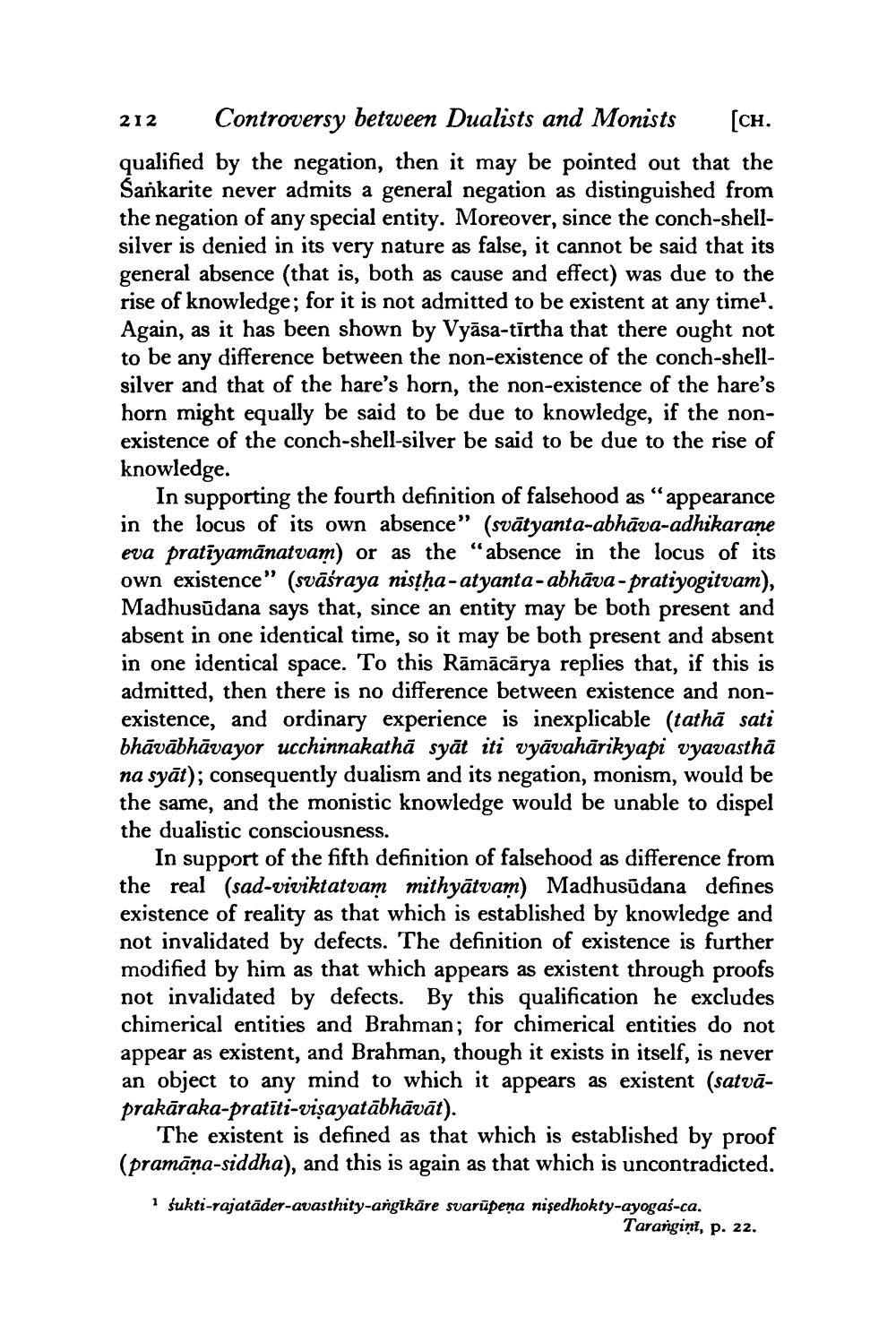________________
212 Controversy between Dualists and Monists [CH. qualified by the negation, then it may be pointed out that the Sankarite never admits a general negation as distinguished from the negation of any special entity. Moreover, since the conch-shellsilver is denied in its very nature as false, it cannot be said that its general absence (that is, both as cause and effect) was due to the rise of knowledge; for it is not admitted to be existent at any time. Again, as it has been shown by Vyāsa-tīrtha that there ought not to be any difference between the non-existence of the conch-shellsilver and that of the hare's horn, the non-existence of the hare's horn might equally be said to be due to knowledge, if the nonexistence of the conch-shell-silver be said to be due to the rise of knowledge.
In supporting the fourth definition of falsehood as “appearance in the locus of its own absence" (svātyanta-abhāva-adhikarane eva pratīyamānatvam) or as the "absence in the locus of its own existence" (svāśraya nistha-atyanta-abhāva-pratiyogitvam), Madhusūdana says that, since an entity may be both present and absent in one identical time, so it may be both present and absent in one identical space. To this Rāmācārya replies that, if this is admitted, then there is no difference between existence and nonexistence, and ordinary experience is inexplicable (tathā sati bhāvābhāvayor ucchinnakathā syāt iti vyāvahārikyapi vyavasthā na syāt); consequently dualism and its negation, monism, would be the same, and the monistic knowledge would be unable to dispel the dualistic consciousness.
In support of the fifth definition of falsehood as difference from the real (sad-viviktatvam mithyātvam) Madhusudana defines existence of reality as that which is established by knowledge and not invalidated by defects. The definition of existence is further modified by him as that which appears as existent through proofs not invalidated by defects. By this qualification he excludes chimerical entities and Brahman; for chimerical entities do not appear as existent, and Brahman, though it exists in itself, is never an object to any mind to which it appears as existent (satvāprakāraka-pratīti-vişayatābhāvāt).
The existent is defined as that which is established by proof (pramāņa-siddha), and this is again as that which is uncontradicted.
fukti-rajatāder-avasthity-angikāre svarūpena nişedhokty-ayogas-ca.
Tarangini, p. 22.




